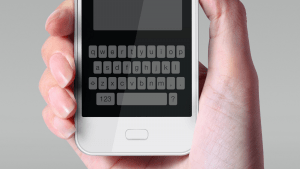Quizlet for Language Teaching
In 2017, I co-wrote an article, Quizlet – Create Engaging Vocabulary Study Sets, about the basics of using Quizlet to assist students with vocabulary acquisition. Since then, Quizlet along with an innumerable number of teachers have refined the possibilities of vocabulary learning through countless study sets, updated features, and instructional techniques. This article henceforth expands the potential of Quizlet for language instructors and students by considering Quizlet’s enhancements.
Another academic year is underway. Introducing and guiding students through new vocabulary is essential to ensuring student success. Using digital tools can facilitate this process by encouraging students to be more accountable for their learning. Some digital tools provide learners with features that can increase their vocabulary acquisition responsibility through:
- Ubiquitous access: Students can use digital tools on their personal devices during classes or in their free time.
- Mastery learning: Digital tools usually require learners to complete tasks before reporting a result.
- Adaptive learning: Some tools offer automated movement between levels of difficulty based on learner performance.
- Instant feedback: A majority of tools provide instant feedback unless a course facilitator has disabled this feature.
- Gamification: Injecting fun, competition, and challenge into learning is a common feature of digital learning. This can include rewards, scores, levels, performance ladders, and storylines.
- Input variation: Digital media includes audio, video, animation, interactivity, imagery and in some virtual spaces.
- Record keeping: If required by an instructor, most digital media allow learner activity and results to be tracked and archived.
Teaching ESL on Zoom – 3 Underused Features
To Quizlet or Not to Quizlet
Quizlet is an online tool that can be used as a mobile app or website, and that incorporates each of these characteristics to a degree. If you have not given Quizlet a try in the past, this may be the year that you dip your toe into Quizlet’s myriad of features. If you have been using Quizlet, the following considerations may expose different ways of using Quizlet with your students this year. I have been reflecting on my own Quizlet vocabulary teaching practice and have jotted down thoughts as I move into a new set of teaching responsibilities this September. If you find these ideas useful, or if you have others not mentioned here, please comment below this post.
Quizlet Reflections
Use the App or Website on student devices?
Should my students use the Quizlet app or just the website on smart devices? At my college, all students own a smart device, so there is no barrier to using the app. Advantages of using the Quizlet app are fast access to learning activities, fewer scheduling concerns as no computer labs or carts are required, and class set up is stress-free since each student has already set up an account for the app. With the app, all students complete the activities at their own pace.
Best Technology for English Teachers
If some of your students do not own smart devices, the Quizlet app is not an option. They must use the Quizlet website. If they use the website, a Quizlet account is not required unless you have set up a Quizlet online class. Some students prefer using this resource through the website without a student account as it eliminates the hassle of forgetting a password and is one less app to store on a smart device.
After choosing whether students use Quizlet via its app or website, there are several challenges to keep in mind. These may include battery charging, Wi-Fi connectivity, availability of headphones, and lack of digital storage on smart devices, to name a few. Each of these can cause issues when marshalling a class using Quizlet on a mobile electronic device.
Of course, the other Quizlet access option is to leave the choice of app vs. website to the students. Students take on the responsibility of accessing vocabulary study sets on Quizlet. They can choose to participate in their smart devices’ browser or on a school workstation. For the latter option, however, the classroom must have suitable workstations available.
Applying Universal Design for Learning in the EFL Classroom
Should I Pay for a Premium Service or just use Basic Quizlet?
I am sure that the majority of students and instructors use Quizlet in Free or Basic mode. If Quizlet is used in an ad hoc fashion, using the free mode is often practical. Instructors can direct students to a vocabulary study set where students can complete the required tasks.
Quizlet recently rebranded its subscription account. Formerly known as Quizlet Teacher, and now called Quizlet Plus, it has been my experience that purchasing a Quizlet plan is a bargain because of the additional capabilities provided by the subscription. Firstly, instructors can organize their study sets. Organized Quizlet study sets allow instructors to locate, update, and share vocabulary activities more efficiently. With the Quizlet Plus subscription, instructors can also set up custom folders to archive study sets.
How to Use Scratch Animation Maker in the Classroom
Quizlet Plus also allows the addition of custom images into study set terms. The basic version of Quizlet offers approximately ten images and does not allow for personalized image uploads. Usually, these are not adequate for most vocabulary terms and target audiences. Adding your own images into your study sets allows you to incorporate animated Gifs onto the flashcards. These can help with actions and concepts.
In addition to image customization, Quizlet Plus powers up your vocabulary lessons with more features, including:
- advertisements disappear from any study set that you create with Quizlet Plus
- text can be formatted with colours, fonts, and sizes for a better presentation
- Quizlet diagrams are allowed an unlimited amount of points of interest
- integrate images and audio into your study sets (including recording your own voice)
- enhanced student progress tracking
- unlimited number of classes
Diagrams
One of Quizlet’s most recent learning activities, Diagrams, has a great deal of potential for students who require vocabulary assistance with their courses. A diagram can be added to a study set to provide a more visual means of interacting with the vocabulary. Locating or creating suitable images is the most challenging aspect of creating Quizlet diagrams. More Quizlet diagram sets are added every week. Simply perform a search for “diagrams” on Quizlet to see the complete list.
Teach Business English with Mind Maps
Print Activities
Some of Quizlet’s study set activities allow users to print a paper version. I often use these to add variation to the vocabulary learning process. Activities that can be printed with variation include Flashcards and Tests. The Test feature includes a combination of True or False, Multiple Choice, Matching, or Fill-in-the-Blank questions. What’s more, these Tests are customizable: teachers can choose which question types to include in each Test created.”
Classes
After you have registered as a teacher, invite your students to join your Quizlet class. They can quickly find your study sets. To operate multiple classes, a Quizlet Plus account is required.
Collaborate
Sharing study sets with teachers at your school and with remote colleagues leads to reciprocal collaboration that will result in more diverse learning experiences for your students. Enhancements resulting from peer collaboration may involve more appropriate images, clearer audio, alternate vocabulary terms, diverse studying paths, and more efficient study sets. As there are more than ten million study sets on the Quizlet servers you and your colleagues can discuss and share, the possibilities are endless.
Using a Wiki for Classroom Teaching
Games
Two games are generated with each study set: these are Gravity and Match. A third, Quizlet Live, is mentioned in a paragraph below. Gravity and Match are simple learning opportunities for students to play arcade-type games related to the current study set. I normally use these with students who complete tasks quickly or as a reward. It is a good practice to ensure that the students toggle the “Answer With” mode to On, as students have great difficulty completely typing a definition before a careening asteroid destroys the planet.
Match has two modes, Match and Micromatch. In Match, students must drag a term over a definition or corresponding image card. In Micromatch, the cards are aligned neatly to provide a more accessible format. Students simply click on matching terms and definitions until all of the cards disappear. To change from the Match to Micromatch activity, simply change the term “match” to “micromatch” at the end of the web address on the browser. When students open Match on their mobile devices, Micromatch appears by default, which facilitates ease of use.
Quizlet Live is a student favourite. If you have used it with your students in the past, I am sure that you will agree. It creates a fun and competitive atmosphere in the class. Teams can be randomized or set by the instructor. All of the vocabulary items are included in the game. Quizlet Live should be played after the students have completed a study set to consolidate learning. It is an engaging and motivating activity.
Embed or Link
Beyond students accessing Quizlet through the Quizlet app on a smart device, Quizlet study sets can be shared with your students by:
- a link positioned on a worksheet or whiteboard,
- a digital hypertext link,
- a scanned QR code or
- being embedded in a learning management system (LMS).
Linking to resources is quick and usually seamless. Most teachers use this technique without a thought. Embedding Quizlet in an LMS ensures that students can reliably access vocabulary activities in an egalitarian manner. Instructors should seriously consider embedding their Quizlet study sets in their LMS course if their students are familiar and confident with the LMS. On some LMSs, embedding does not provide the best use of screen space if students are using smart phones.
Combining Study Sets
I have found that setting up study sets for review purposes has helped my students focus on key vocabulary before quizzes and exams. The Combine feature allows instructors to merge different study sets into a new study set. I share these strategically during the term allow students to revise on their own time.
Study Offline or Online
Students can download current study sets quickly and can revise without requiring data or Wi-Fi. The Quizlet app is required for this feature
Learn
The Quizlet Learn activity allows students to experience adaptive learning with a study set. Students are encouraged to master the vocabulary through strategic repetition.
Use in Moderation
Students can experience techno-fatigue if an application is overused in a course. Try using specific Quizlet tools when they are relevant. For example, use the Spell feature if a unit word list contains particularly difficult words. Assigning all of the Quizlet tools for each unit may end in a student rebellion close to the mid-term. I introduce each Quizlet feature to the students over the first few weeks and encourage students to use Quizlet on their own. Interleaving it with other tools to teach vocabulary, such as Kahoot, can ensure that Quizlet will feel fresh and relevant to students.
Give it a Try
I recommend using the basic version of Quizlet to see if it works for your students. In the resources list below, I have provided some “How to” documents and additional blog posts related to using Quizlet with language students. I hope that these help your students get more out of your vocabulary lessons this year.
Links to Quizlet Resources
Add Fun to Your Vocabulary Lessons with Quizlet Live
Create Learning Objects Quickly with Quizlet






